Impact of the European Green Deal on Business Operations—Preliminary Benchmarking
Abstract
:1. Introduction
- Q1. What operational activities can be identified that are undertaken by economic organizations in order to implement the guidelines of the European Green Deal and environmental protection?
- Q2. What factors can be identified that hinder and motivate the implementation of environmental changes when applying the guidelines of the European Green Deal and environmental protection?
2. The European Green Deal
3. Data and Methods
3.1. Research Methodology
3.2. Characteristics of Business Professionals and Enterprises
4. The Research Results
4.1. Awareness of Practitioners
4.2. Business Activity
- Only business professionals from German (4) and Dutch (7) companies answered correctly all five questions on the European Green Deal;
- As many as six professionals did not give a single correct answer to questions about sustainable development;
- Practitioners from Germany and the Netherlands who answered all the questions correctly also selected the maximum number of measures their company takes to achieve the EGD objectives. It can therefore be concluded that these business professionals, as well as the companies employing them, are the only ones who are fully aware of the EMU concept and are involved in climate protection measures. These organizations also undertake the most measures that can actually contribute to the protection of the natural environment;
- Only five enterprises selected the maximum number of actions in the questions concerning actions aimed at achieving the objectives of the EGD and carried out for environmental protection.
5. Discussion
6. Conclusions
Author Contributions
Funding
Institutional Review Board Statement
Informed Consent Statement
Data Availability Statement
Conflicts of Interest
References
- Adedoyin, F.F.; Gumede, M.I.; Bekun, F.V.; Etokakpan, M.U.; Balsalobre-Lorente, D. Modeling coal rent, economic growth and CO2 emissions: Does regulatory quality matter in BRICS economies? Sci. Total Environ. 2020, 710, 136284. [Google Scholar] [CrossRef] [PubMed]
- Zhang, B.; Wang, Z.; Wang, B. Energy production, economic growth and CO2 emission: Evidence from Pakistan. Nat. Hazards 2018, 90, 27–50. [Google Scholar]
- Mardani, A.; Streimikiene, D.; Cavallaro, F.; Loganathan, N.; Khoshnoudi, M. Carbon dioxide (CO2) emissions and economic growth: A systematic review of two decades of research from 1995 to 2017. Sci. Total Environ. 2019, 649, 31–49. [Google Scholar] [CrossRef] [PubMed]
- Kühne, R.W. Climate Change: The Science Behind Greta Thunberg and Fridays for Future; OSF Preprints: Charlottesville, VA, USA, 2019. [Google Scholar]
- Melidis, M.; Russel, D. Environmental policy implementation during the economic crisis: An analysis of European member state ‘leader-laggard’ dynamics. J. Environ. Policy Plan. 2020, 22, 198–210. [Google Scholar] [CrossRef]
- Claeys, G.; Tagliapietra, S.; Zachmann, G. How to Make the European Green Deal Work; Policy Contribution Issue; Bruegel: Brussels, Belgium, 2019; pp. 1–21. [Google Scholar]
- Haines, A.; Scheelbeek, P. European Green Deal: A major opportunity for health improvement. Lancet 2020, 395, 1327–1329. [Google Scholar] [CrossRef] [PubMed]
- Pianta, M.; Lucchese, M. Rethinking the European Green Deal: An industrial policy for a just transition in Europe. Rev. Radic. Polit. Econ. 2020, 52, 633–641. [Google Scholar] [CrossRef]
- Eckert, E.; Kovalevska, O. Sustainability in the European Union: Analyzing the Discourse of the European Green Deal. J. Risk Financ. Manag. 2021, 14, 80. [Google Scholar] [CrossRef]
- Prandecki, K.; Wrzaszcz, W.; Zieliński, M. Environmental and Climate Challenges to Agriculture in Poland in the Context of Objectives Adopted in the European Green Deal Strategy. Sustainability 2021, 13, 10318. [Google Scholar] [CrossRef]
- Fetting, C. The European Green Deal; ESDN Report; European Comission: Brussels, Belgium, 2020. [Google Scholar]
- Leonard, M.; Pisani-Ferry, J.; Shapiro, J.; Tagliapietra, S.; Wolff, G.B. The Geopolitics of the European Green Deal (No. 04/2021); Bruegel Policy Contribution; European Comission: Brussels, Belgium, 2021. [Google Scholar]
- Skowroński, A. Sustainable development as a perspective of further civilizational progress. Eco-Dev. Probl. 2006, 1, 47–57. [Google Scholar]
- Kim, R.E. The nexus between international law and the sustainable development goals. Rev. Eur. Comp. Int. Environ. Law 2016, 25, 15–26. [Google Scholar] [CrossRef]
- Gupta, J.; Nilsson, M. 12 toward a multi-level action framework for sustainable development goals. In Governing through Goals: Sustainable Development Goals as Governance Innovation; The MIT Press: Cambridge, MA, USA, 2017; pp. 275–294. [Google Scholar]
- Zhang, L.; Saydaliev, H.B.; Ma, X. Does green finance investment and technological innovation improve renewable energy efficiency and sustainable development goals. Renew. Energy 2022, 193, 991–1000. [Google Scholar] [CrossRef]
- Schaltegger, S.; Wagner, M. Sustainable entrepreneurship and sustainability innovation: Categories and interactions. Bus. Strategy Environ. 2011, 20, 222–237. [Google Scholar] [CrossRef]
- Evans, S.; Vladimirova, D.; Holgado, M.; Van Fossen, K.; Yang, M.; Silva, E.A.; Barlow, C.Y. Business model innovation for sustainability: Towards a unified perspective for creation of sustainable business models. Bus. Strategy Environ. 2017, 26, 597–608. [Google Scholar] [CrossRef]
- Rosário, A.T.; Raimundo, R.J.; Cruz, S.P. Sustainable Entrepreneurship: A literature review. Sustainability 2022, 14, 5556. [Google Scholar] [CrossRef]
- Balicka, A. Ecological Controlling in a Company; Scientific Papers of the Wrocław University of Economics; No. 399; Wrocław University of Economics: Wrocław, Poland, 2015; pp. 13–21. [Google Scholar]
- Golinska-Dawson, P. Decision making framework enabling sustainable remanufacturing in small and medium sized enterprises in the automotive sector. In Proceedings of the 35th International Business Information Management Association Conference (IBIMA), Seville, Spain, 1–2 April 2020; pp. 14409–14422. [Google Scholar]
- Fagioli, F.F.; Paolotti, L.; Boggia, A. Trends in Environmental Management Systems Research. A Content Analysis. Environ. Clim. Technol. 2022, 26, 46–63. [Google Scholar] [CrossRef]
- Global Compact Polska. Global Compact Yearbook; Global Compact Polska: Warsaw, Poland, 2015. [Google Scholar]
- León Bravo, V.; Moretto, A.; Caniato, F. A roadmap for sustainability assessment in the food supply chain. Br. Food J. 2021, 123, 199–220. [Google Scholar] [CrossRef]
- Grabowski, D. Etyka pracy jako zmienna psychologiczna. Czas. Psychol. 2012, 18, 237–246. [Google Scholar]

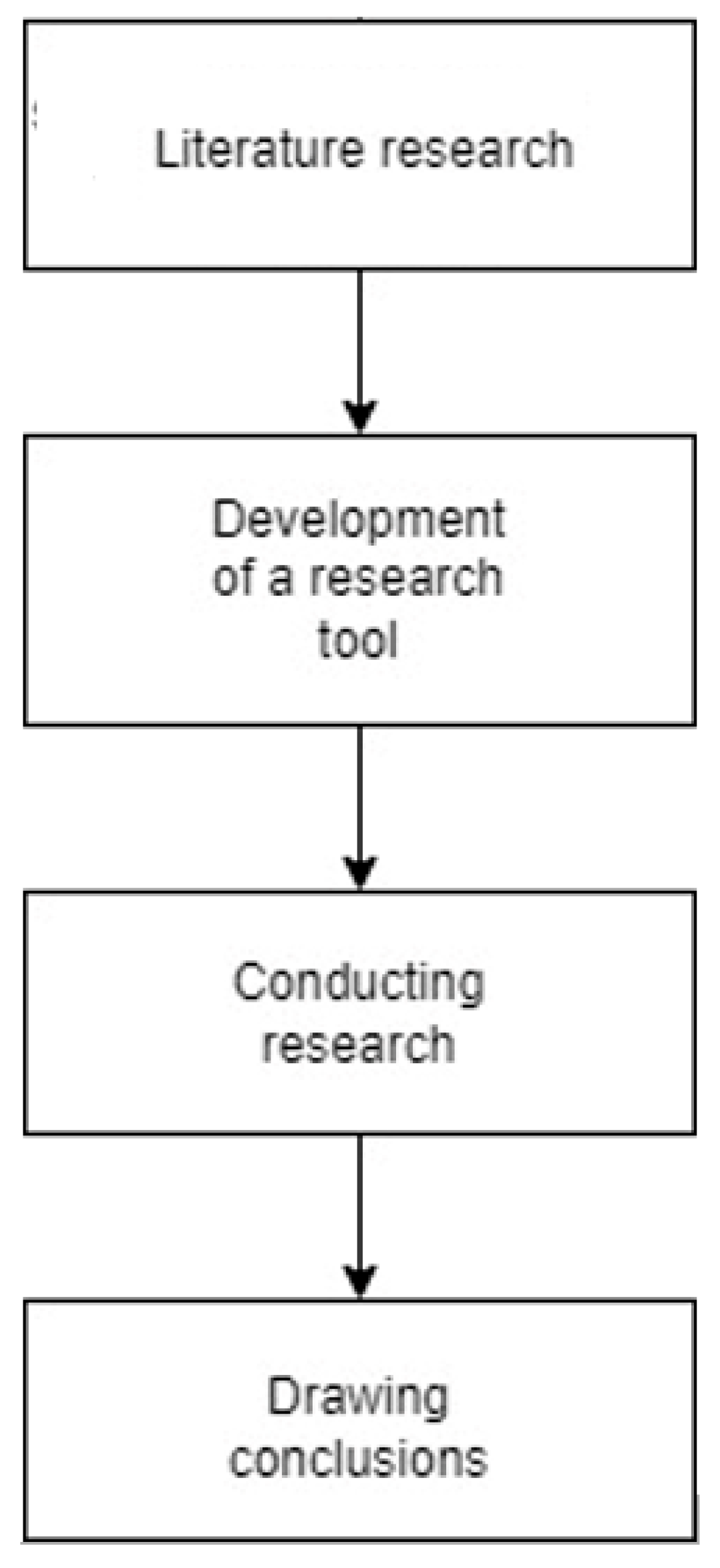
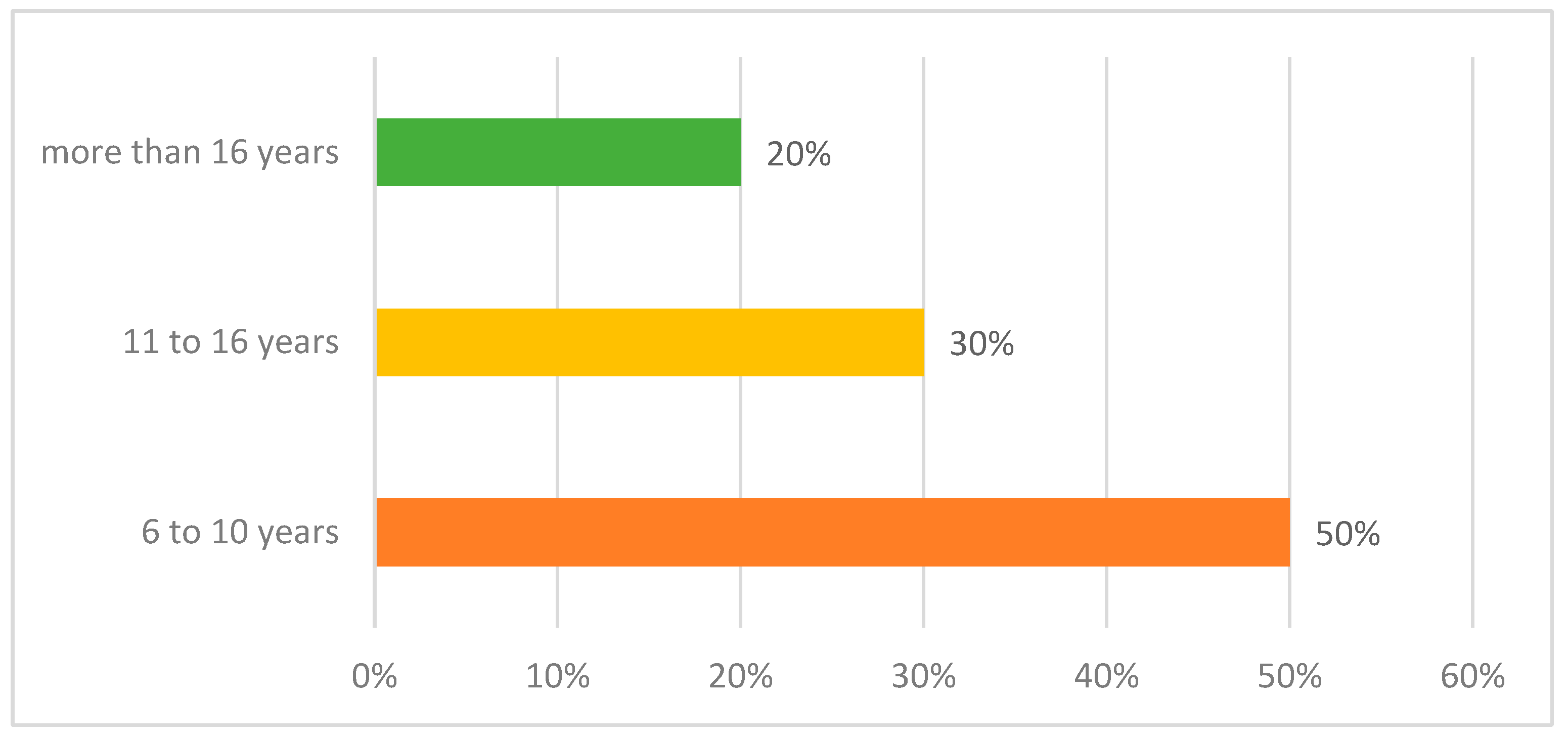


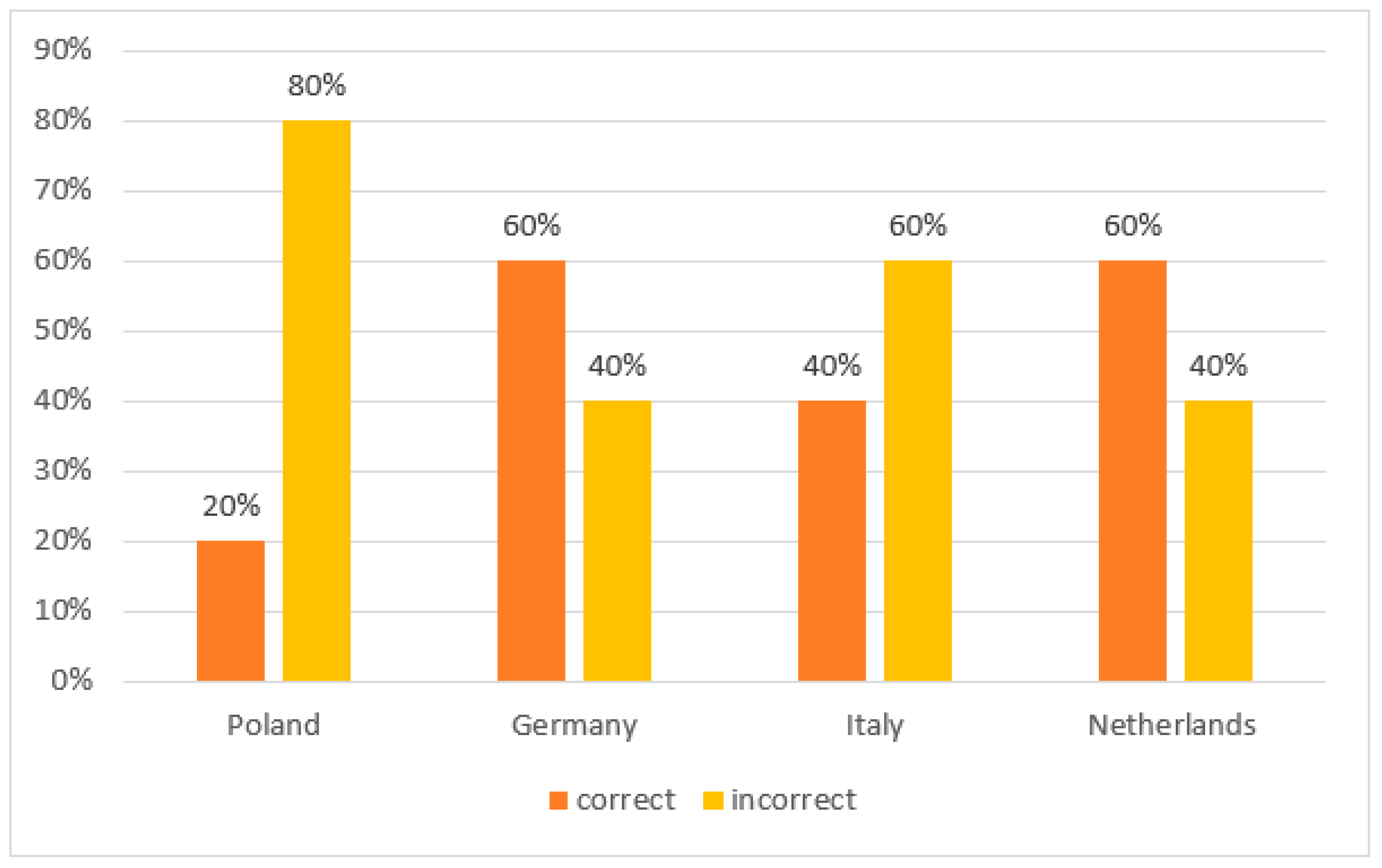

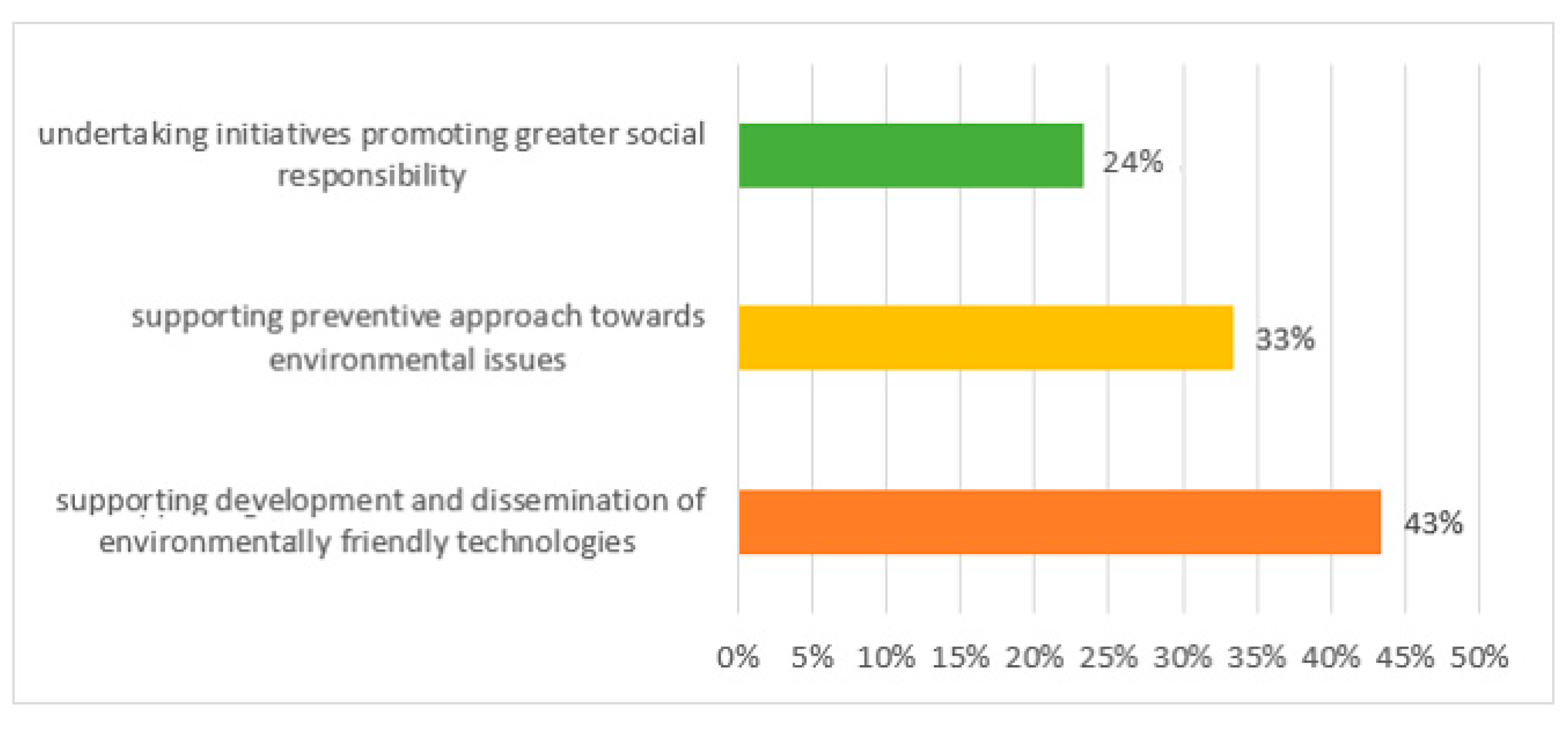

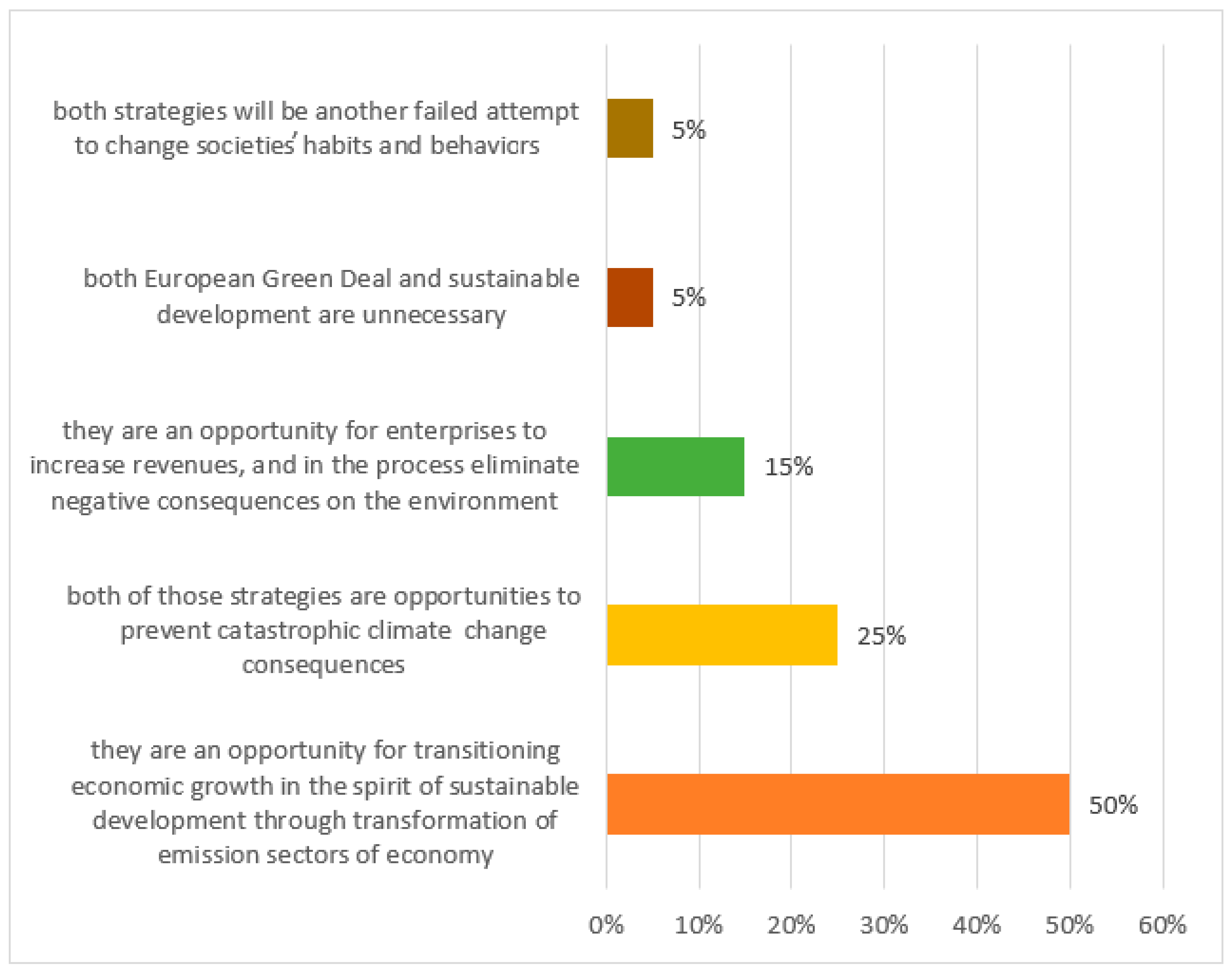
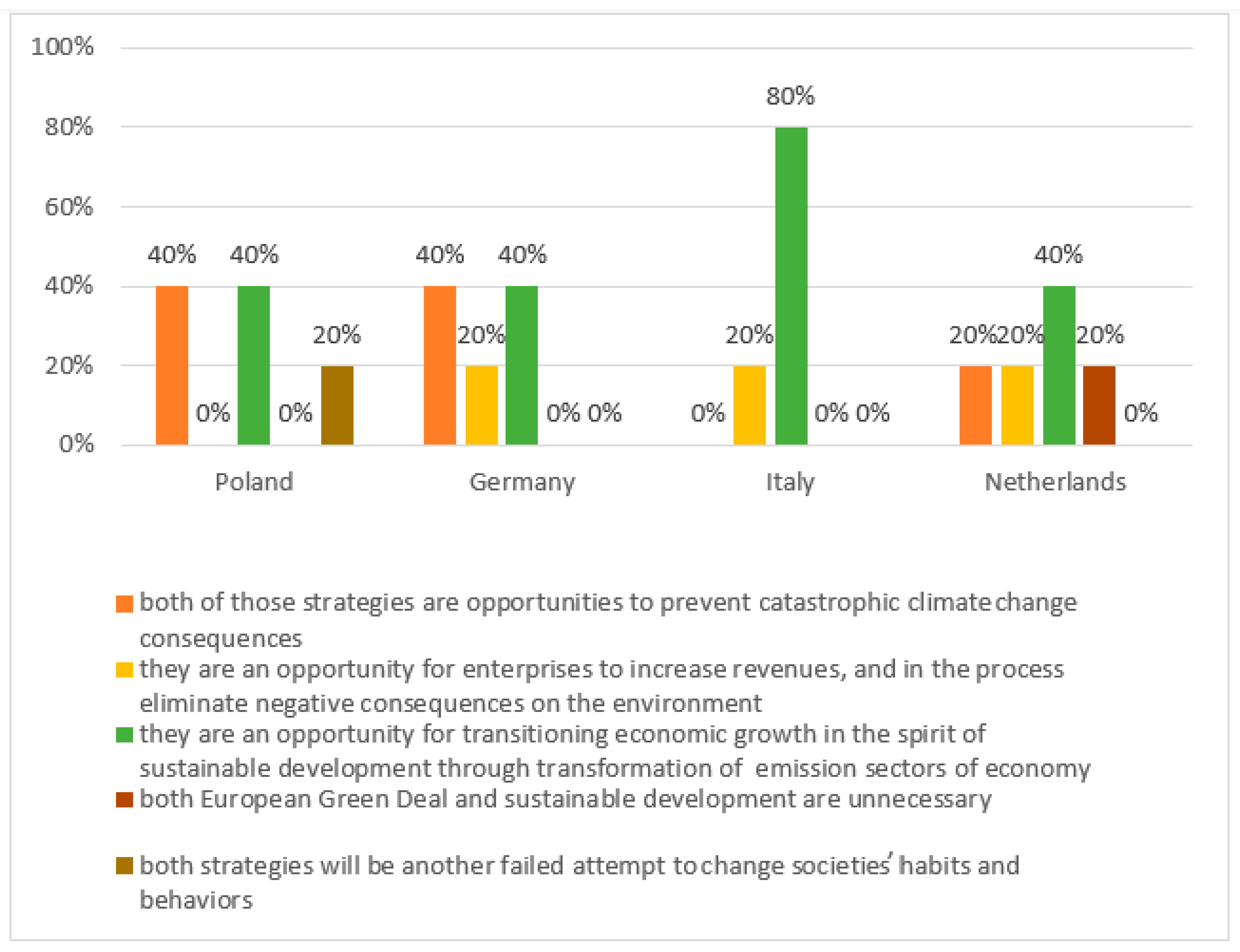
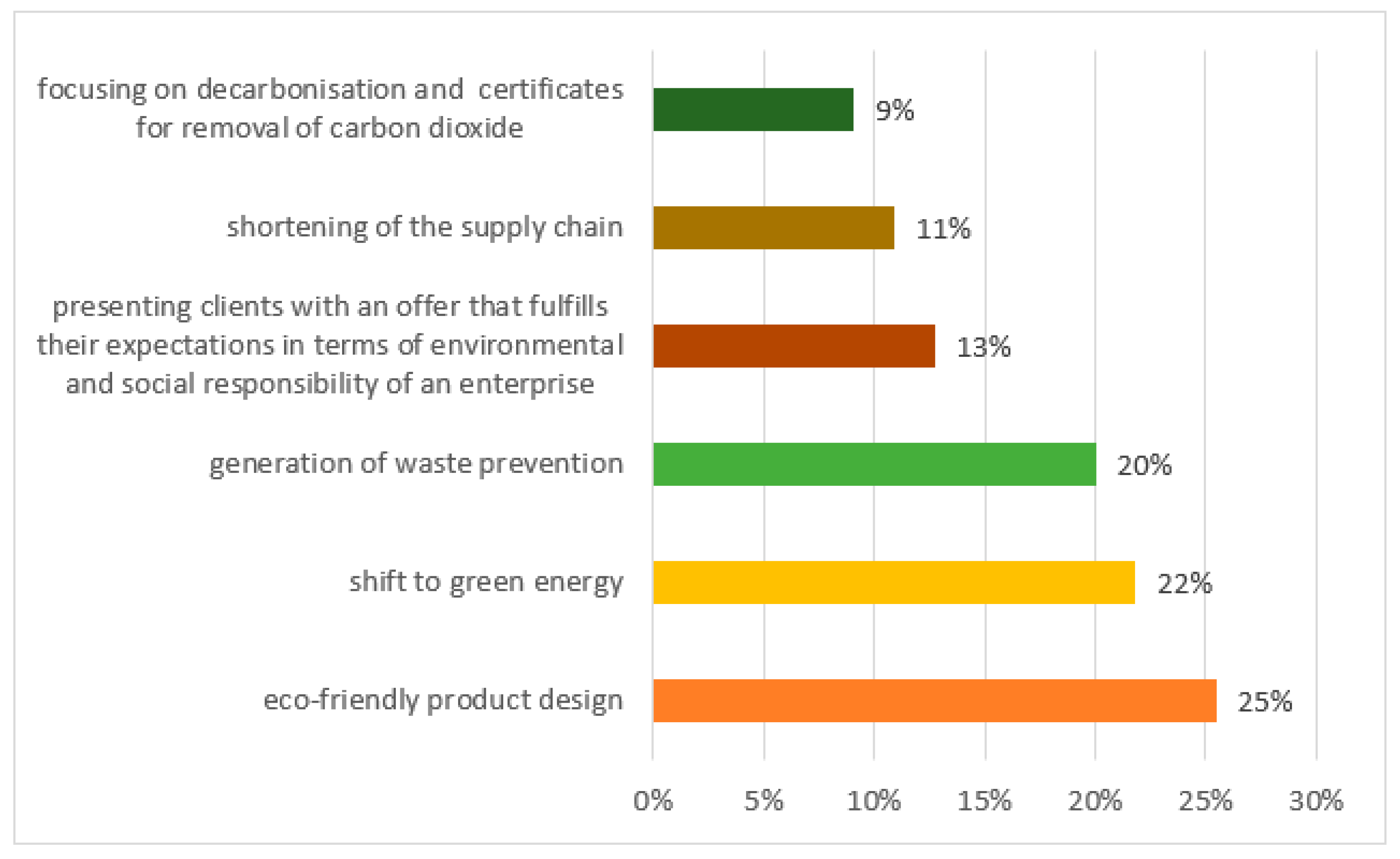
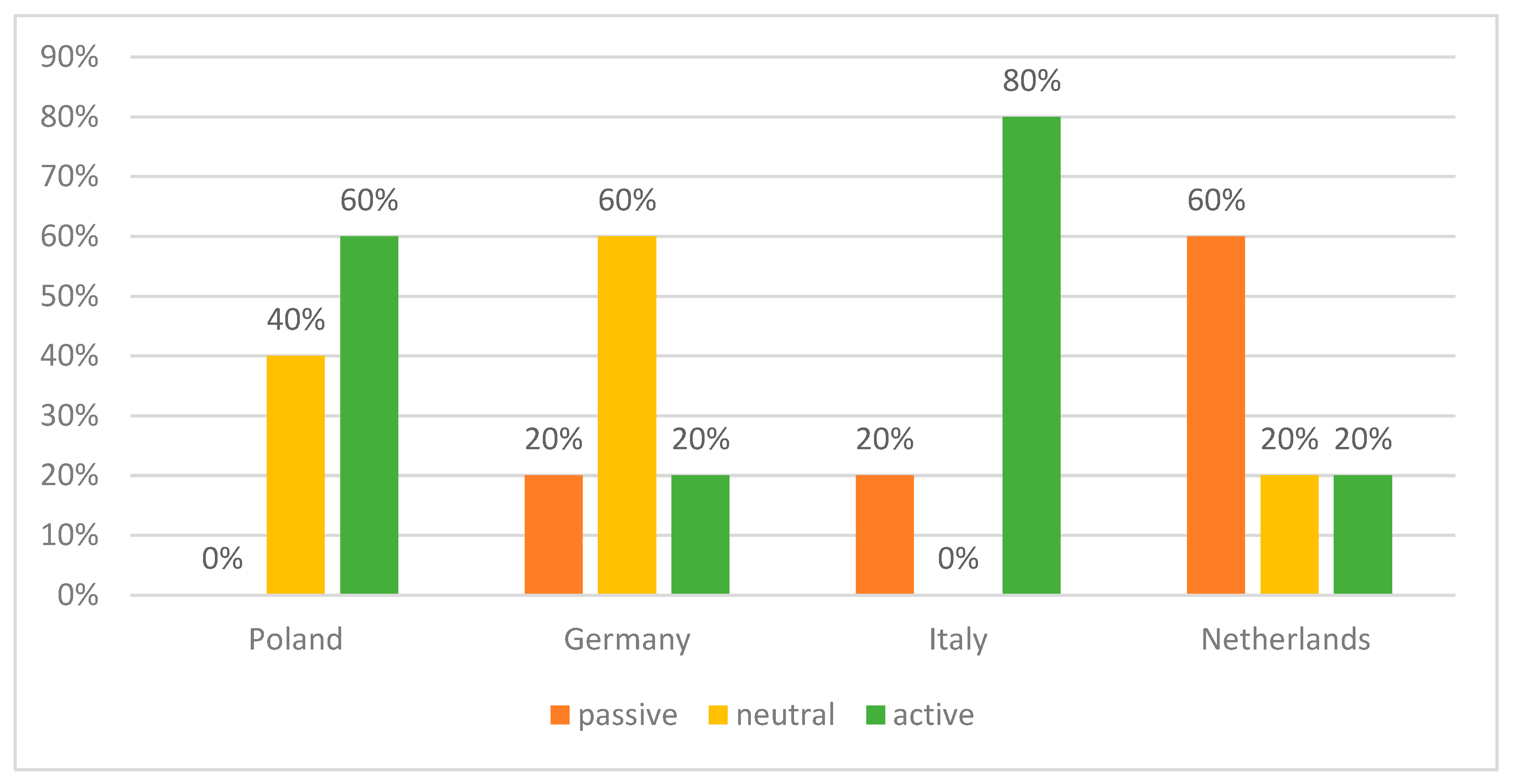
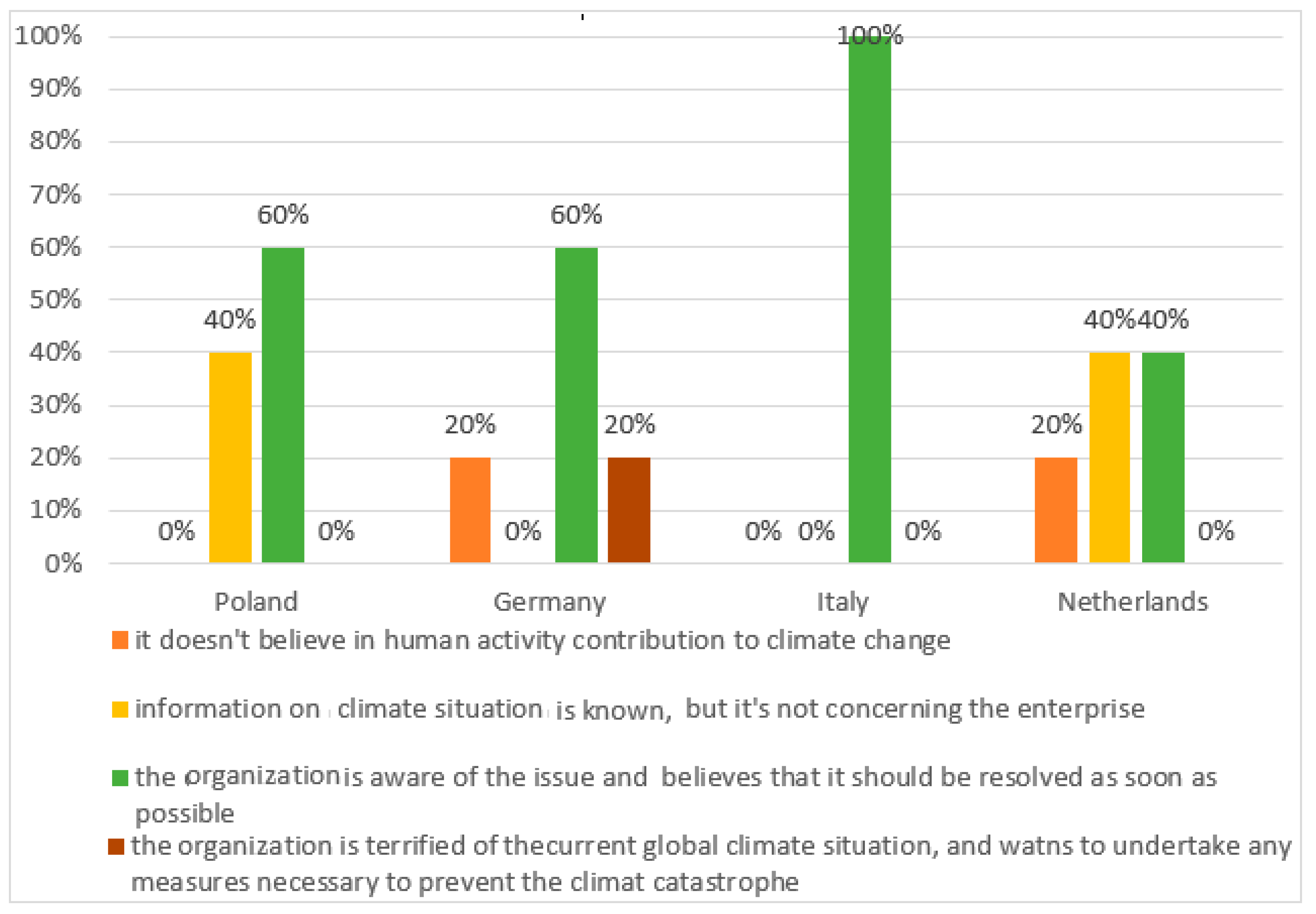

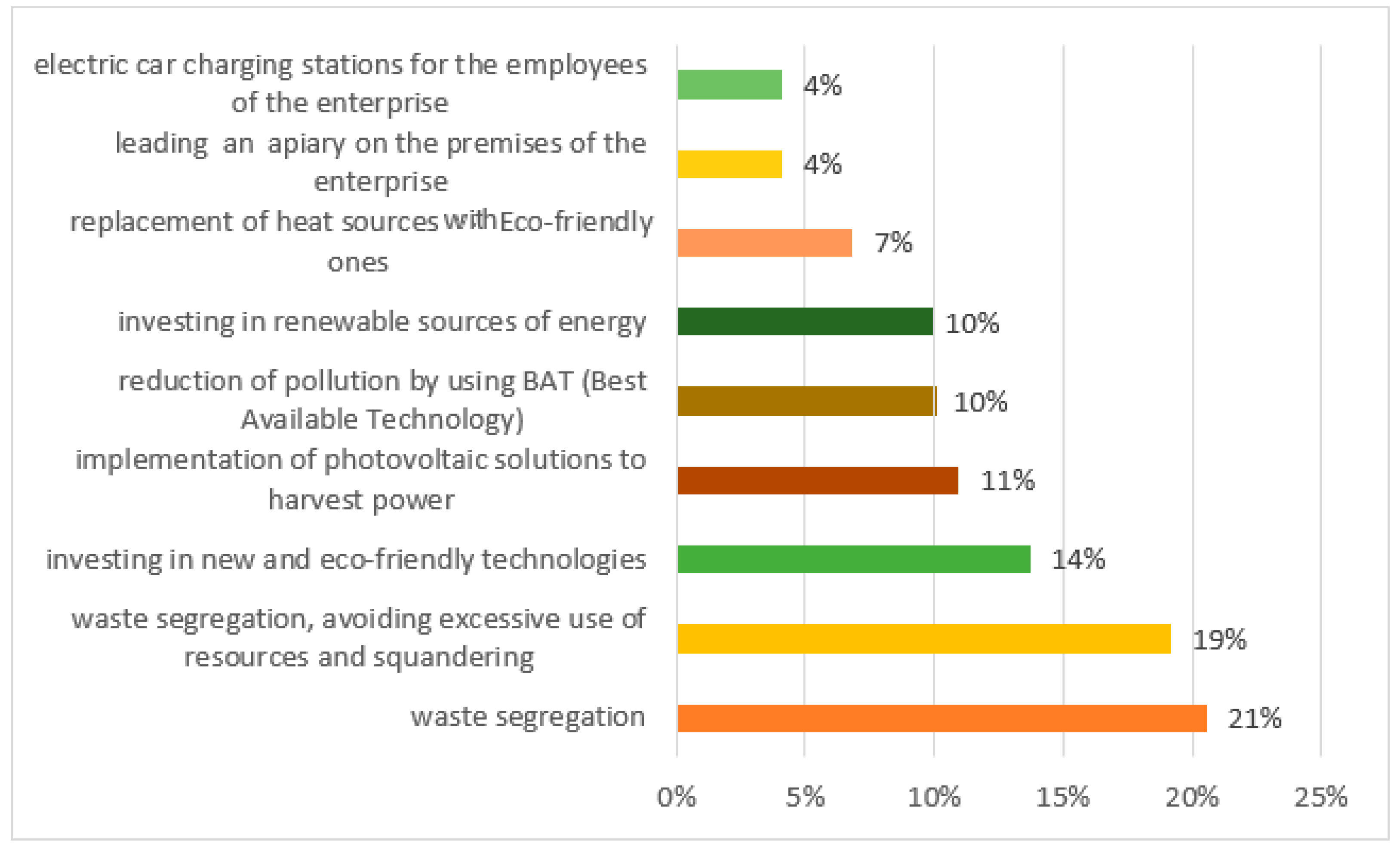

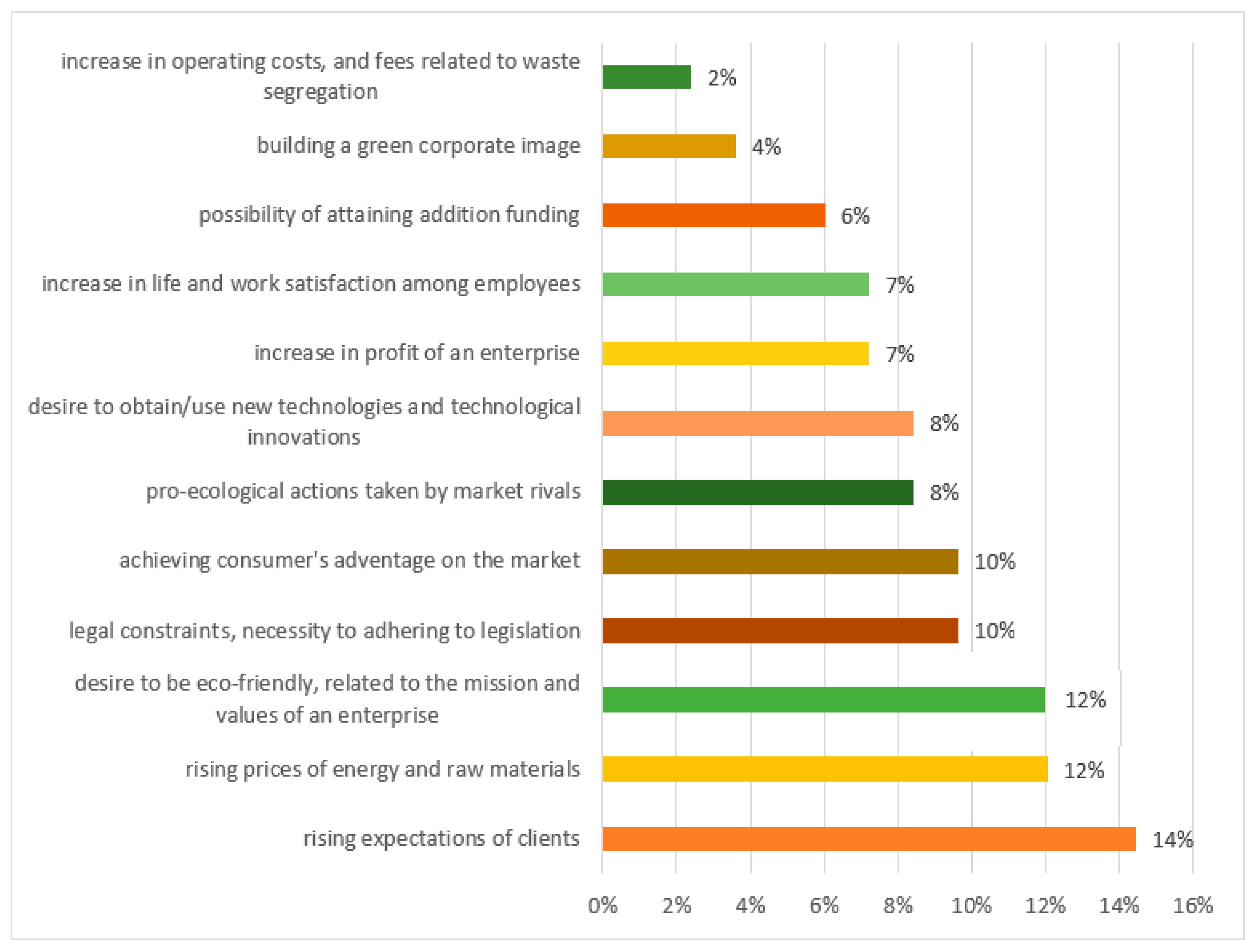

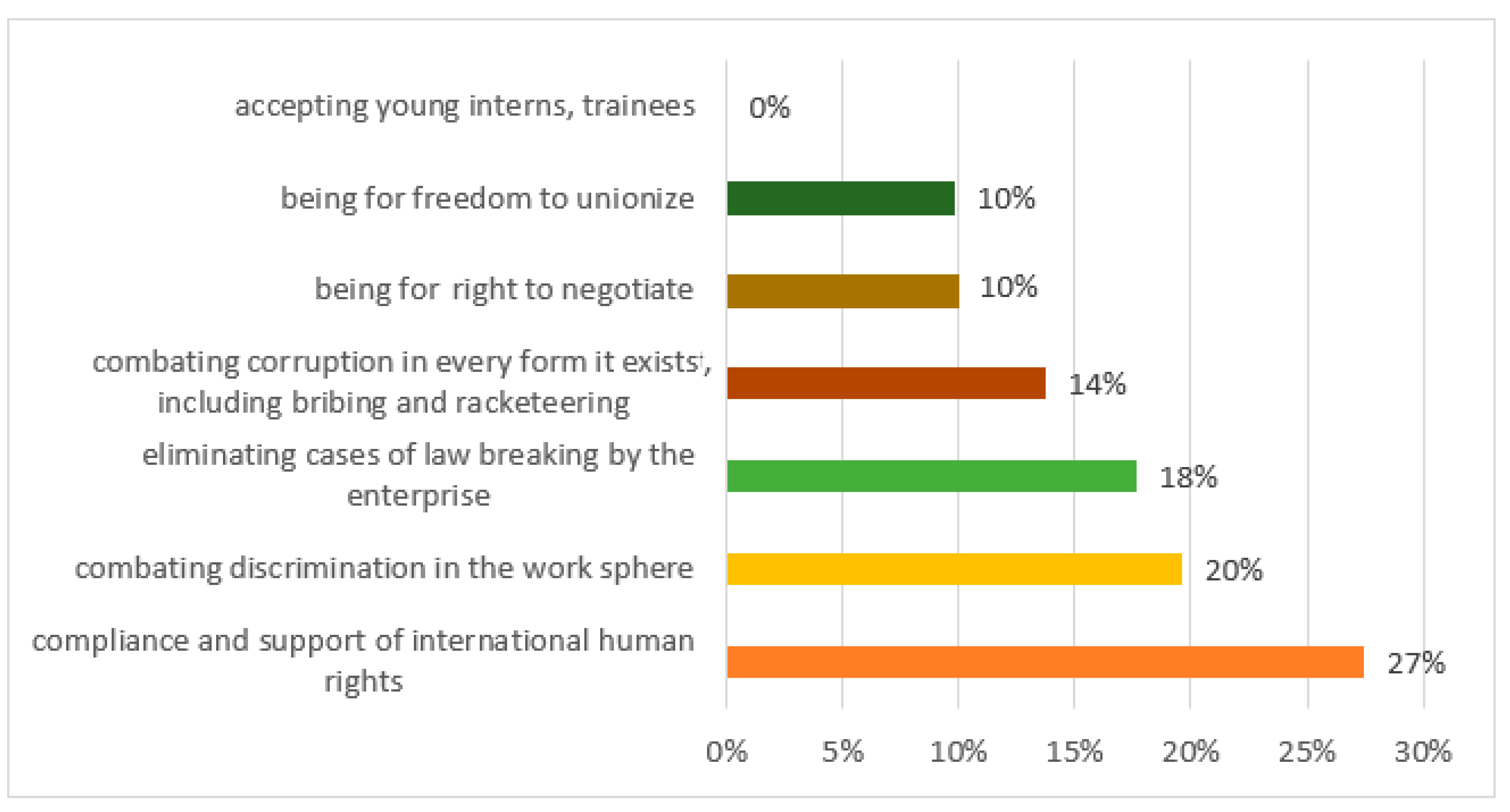
Disclaimer/Publisher’s Note: The statements, opinions and data contained in all publications are solely those of the individual author(s) and contributor(s) and not of MDPI and/or the editor(s). MDPI and/or the editor(s) disclaim responsibility for any injury to people or property resulting from any ideas, methods, instructions or products referred to in the content. |
© 2023 by the authors. Licensee MDPI, Basel, Switzerland. This article is an open access article distributed under the terms and conditions of the Creative Commons Attribution (CC BY) license (https://creativecommons.org/licenses/by/4.0/).
Share and Cite
Lamenta, Z.A.; Grzybowska, K. Impact of the European Green Deal on Business Operations—Preliminary Benchmarking. Sustainability 2023, 15, 7780. https://doi.org/10.3390/su15107780
Lamenta ZA, Grzybowska K. Impact of the European Green Deal on Business Operations—Preliminary Benchmarking. Sustainability. 2023; 15(10):7780. https://doi.org/10.3390/su15107780
Chicago/Turabian StyleLamenta, Zuzanna A., and Katarzyna Grzybowska. 2023. "Impact of the European Green Deal on Business Operations—Preliminary Benchmarking" Sustainability 15, no. 10: 7780. https://doi.org/10.3390/su15107780
APA StyleLamenta, Z. A., & Grzybowska, K. (2023). Impact of the European Green Deal on Business Operations—Preliminary Benchmarking. Sustainability, 15(10), 7780. https://doi.org/10.3390/su15107780





